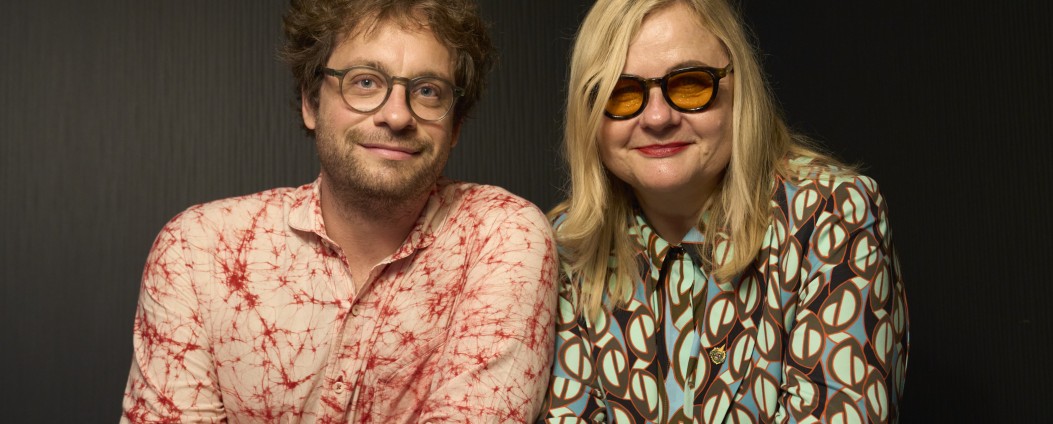
Interview with Veronika Franz & Severin Fiala
15 Nov 2024
Reading 4 min.
“We didn’t want to make a typical horror movie, but rather a film about the inherent horrors of existence”
Nothing compares to creating as a family. Veronika Franz and Severin Fiala, aunt and nephew, have been creating a brief but powerful filmography since 2014, culminating in The Devil’s Bath, a dark, devastating period piece produced by Ulrich Seidl that combines psychological horror, gothic drama, and folk horror - by María Adell Carmona
The movie is set in 18th century Austria and based on real events. How did you come across them?
Severin Fiala: The first time we heard about this phenomenon of people with suicidal tendencies, many of them women, who decided to commit capital crimes to avoid taking their own lives and thus escape eternal damnation for religious reasons, was on a podcast featuring historian Kathy Stuart. We immediately got in touch with her, and she was very generous in sharing her research and sending us many documents of real interrogations she had collected. We were deeply moved to learn firsthand about the authentic lives of women who, had they not committed those crimes, we would never have known. Ordinary women—peasants, farmers—with their struggles and dreams.
How was the writing process?
Veronika Franz: It was very difficult for us to find the right way to tell the story. At first, we thought that, since we had those historical documents, the most logical thing would be to make a courtroom drama, but we quickly dismissed that idea because we felt it would lose emotional impact. Those interrogations allowed us to see a woman speaking about her deepest feelings, her fears, her sins. We wanted to stay true to that woman and to what she was telling us about herself through those interrogations. Therefore, we also didn’t want to make a conventional horror film, but rather a film about the inherent horrors of existence.
It’s true that this film is very different from your previous ones, starting with it being a period piece.
SF: We didn’t want to make a film about the past, because a movie doesn’t have to be a history lesson. We wanted to talk about the present, not just about Austria, but about what’s happening everywhere. The themes the film tackles—mental health and the fact that depression is still a taboo in many places—are very contemporary. The protagonist, Agnes, is a perfectionist, a woman who thinks nothing she does is ever enough, that she will never measure up to what society and others expect of her, and this drives her into a deep depression. It’s true that we no longer live in a religious society like the one depicted in the film, but in this capitalist world, we aren’t much freer: we’re forced to behave according to the rules of a society we cannot escape from.
The theme of motherhood, or its absence, as in this case, is one you already explored in Goodnight Mommy.
SF: It’s true that both films deal, to some extent, with motherhood or the expectations society places on women who are mothers or believe they should become mothers. The film also aims to shed light, as feminism has done in recent decades, on that part of women’s history that has remained hidden for centuries, but from a different perspective. Here, we are not talking about the tragedy of women falsely accused of witchcraft and consequently murdered, but rather about a much more complex female character. Agnes is a victim, but she is also the perpetrator of a terrible crime, which makes her a much harder character to digest.
The actress, Anja Plaschg, is incredible. How did you find her?
VF: Anja is a singer and musician; she had very little acting experience. We reached out to her because we wanted to ask her to collaborate on the soundtrack, but when we met her, we asked if she could audition, and we immediately knew she was the one. Anja is a perfectionist and wanted to experience everything firsthand, which fit perfectly with our way of filming, as we’re not the kind of filmmakers who always stick to the script—we like to stay open to the unexpected things that happen during shooting. Furthermore, we shot the film chronologically, so by the time Anja reached the confession scene, near the end, she knew her character inside and out and gave it her all; it’s a very intense scene that we shot in a single take—we didn’t have to repeat it.
You’ve always worked together; what is your working process like?
VF: (laughing) You’re right. We usually say we’re a two-headed monster, but with a single shared brain.
SF: We can’t split up because that would leave us with only half a brain, so we always try to do everything together; we don’t divide responsibilities or tasks. It’s a collaborative process that can make things slower, but it also makes it much easier to deal with challenging situations under high pressure. If you’re alone, you’re more likely to give in to those pressures, but if you’re a two-headed filmmaker-monster, you feel much stronger to face them.
[interview extracted from the Festival Diary of October 6th and 7th, 2024]
Previous content
Interview with Lauren LaVeraNext content
Interview with Alexandre Aja